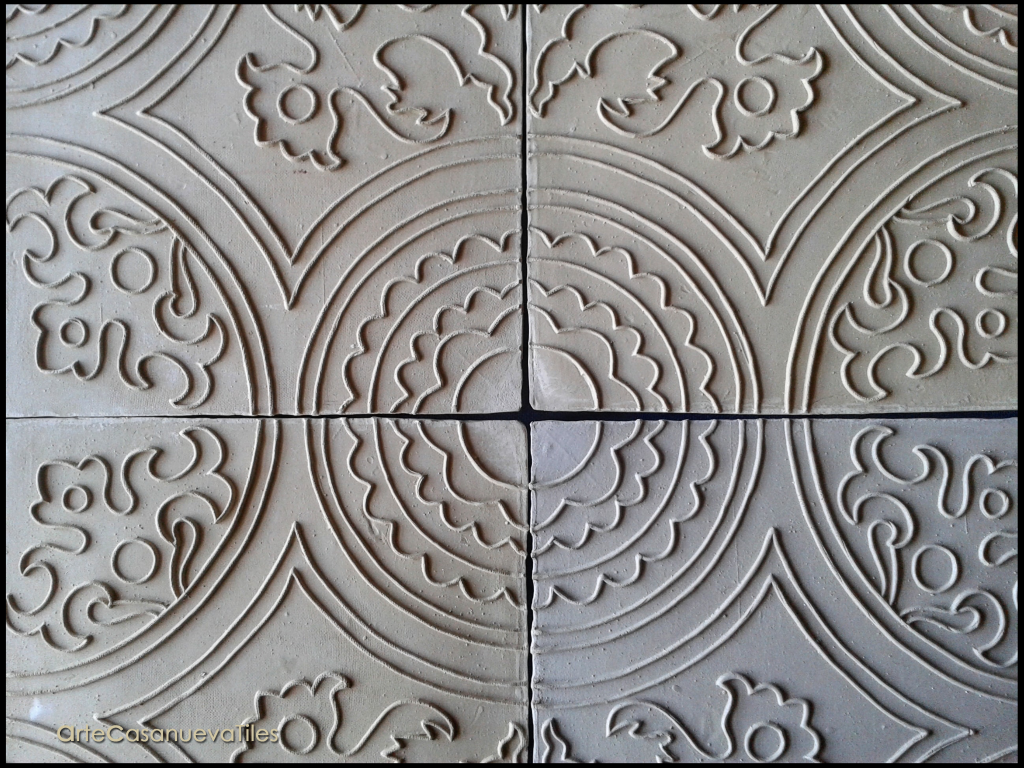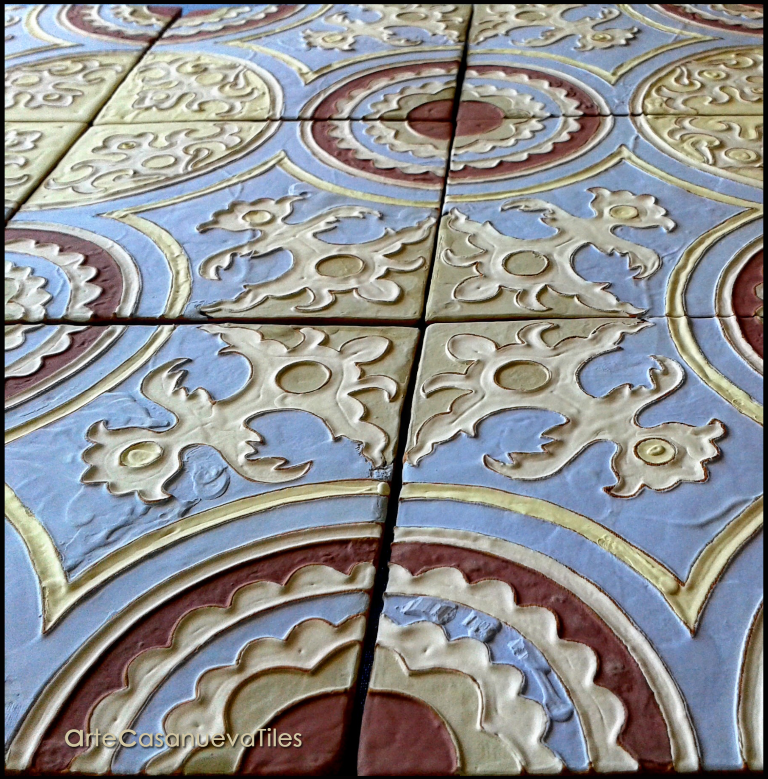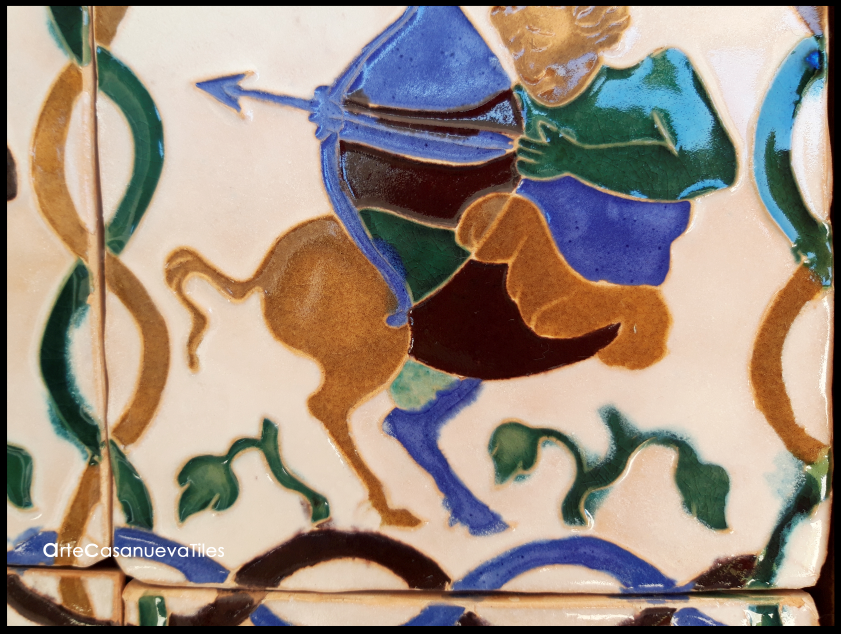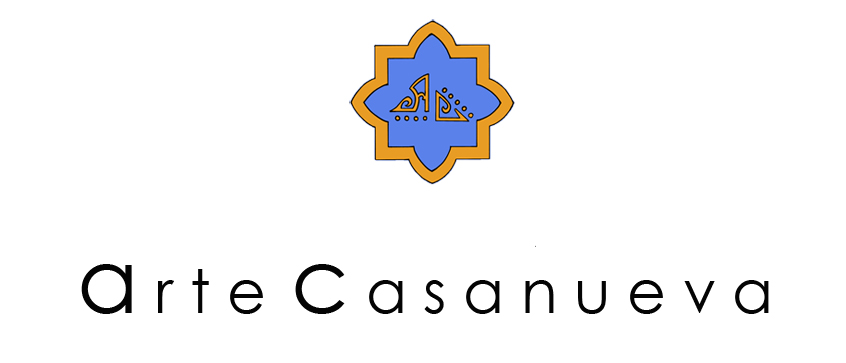USED DECORATIVE TECHNIQUES
Each tile and ceramic piece is decorated with the different traditional techniques used for centuries and all of them practiced without interruption to this day. All the techniques remain as fresh and current as the new ways of working with clay and decorating ceramics developed in recent decades. Ceramics continue to evolve alongside the artisan of the 21st century.
The traditional techniques used in the workshop are cuerda seca (dry line), majolica, arista o cuenca (edge o basin technique), incised Mosaic, slips and glazed.
MAJOLICA TECHNIQUE
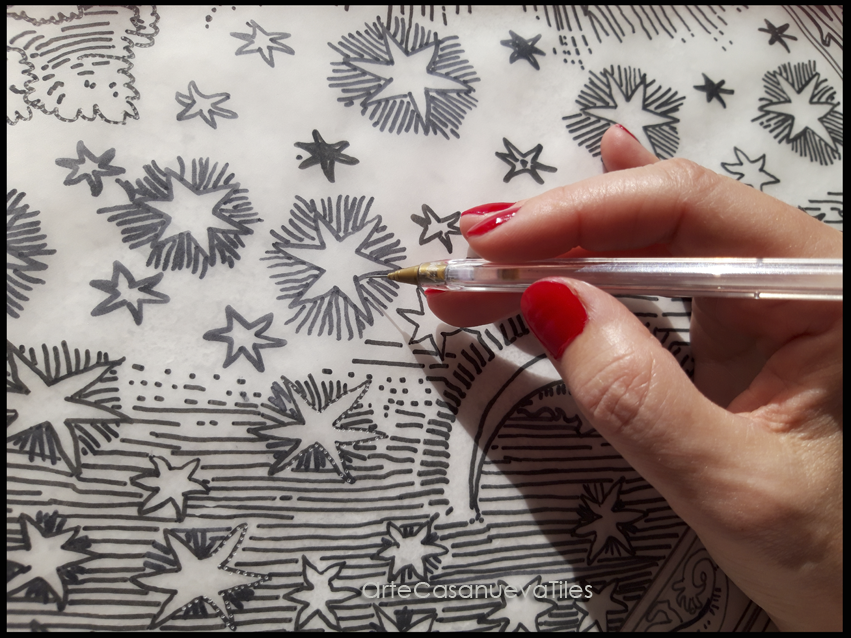

This decorative technique was developed by the Arabs in the 10th century, introduced by them in Spain and widely spread in the 13th century.
The term majolica is Italian and coined when Hispanic-Muslim ceramics arrived in Italy in the 14th century, thus calling this technique since the Renaissance. In Spain the term Sobrecubierta (on top the glaze) and Majolica is used.
For the elaboration of the majolica, the clay piece is first fired at 980ºC in the kiln, once it is fired it is covered or bathed with an opaque stanniferous white glaze and then painted on top of this still raw glaze layer, decorated with mineral oxides. After the painting is finished, the piece is fired a second time, obtaining a shiny glazed piece with a flat and smooth surface.
In the workshop, the tiles are first hand-glazed one by one, and then the drawing is passed with the stencil technique on the surface of the white glaze. The marked drawing is outlined with a brush with manganese oxide and finally colored by hand using the oxides and glazes prepared for this purpose. Carrying out all the work in a traditional way, it is for this reason that a unique and unrepeatable work is achieved.
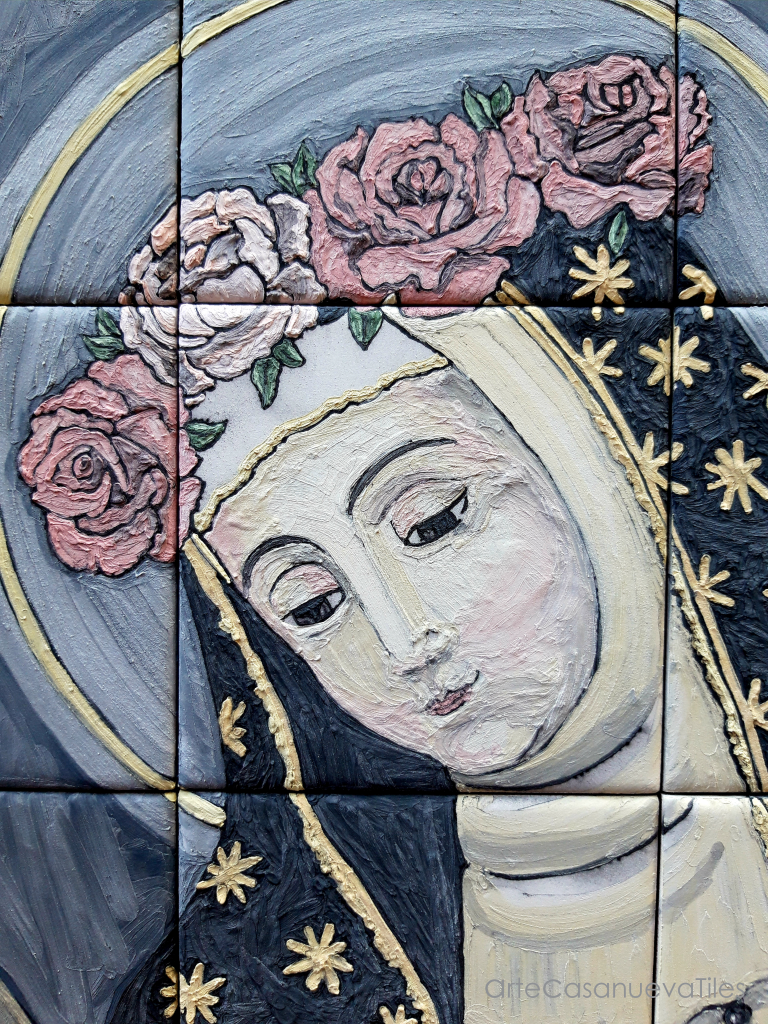
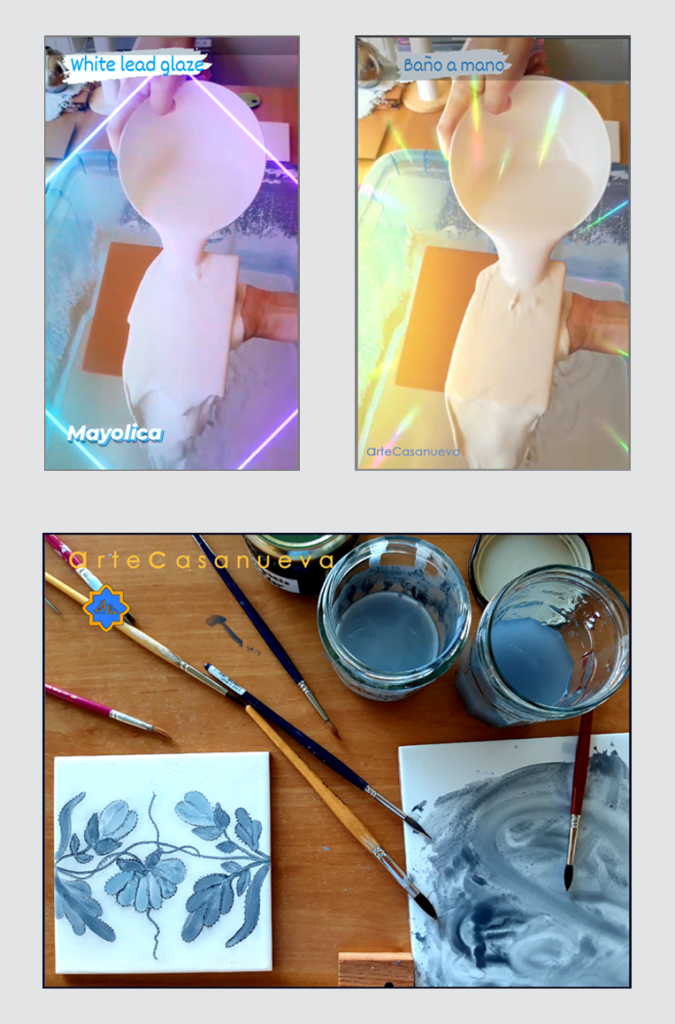
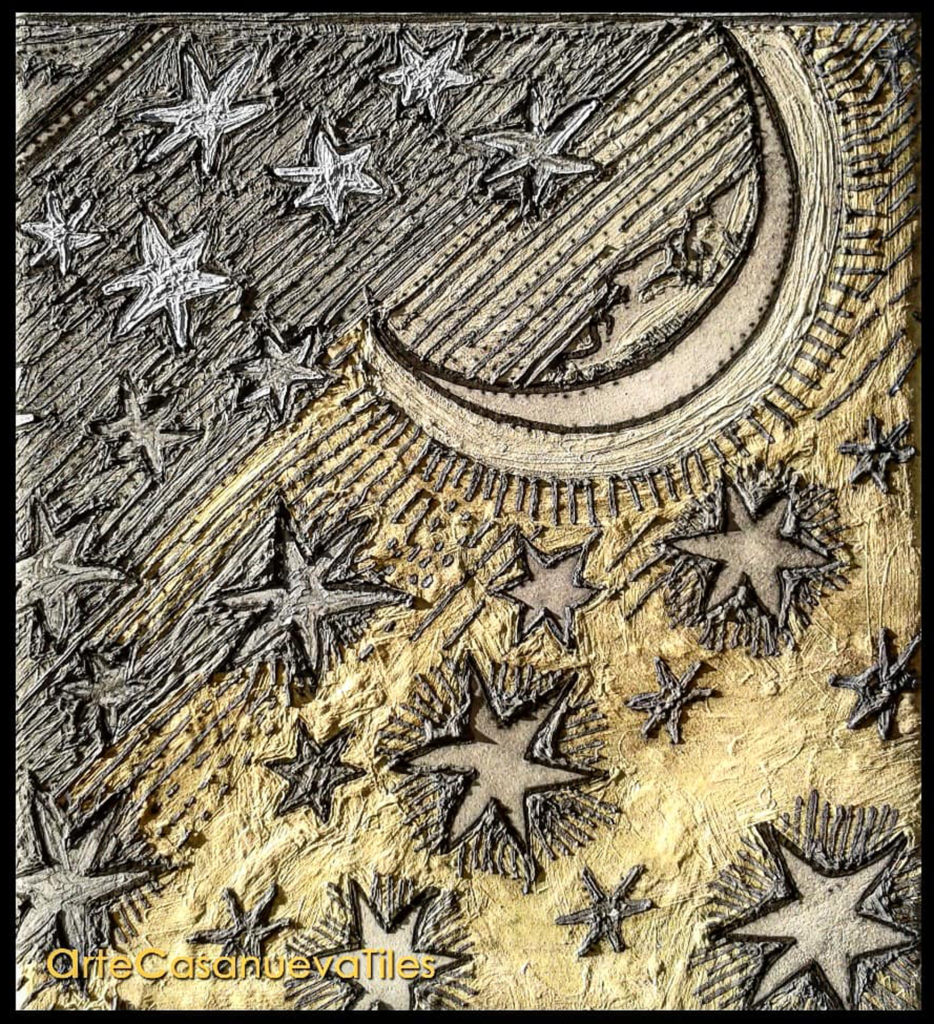
Tiles painted with glaze still raw before going into the kiln.
CUERDA SECA TECHNIQUE
Cuerda seca (dry line) is a very old technique brought to Spain in Islamic times in the 10th century. This technique achieves the chromatic separation of the decorative motifs on a tile. First, the earthenware piece has to be fired at 980ºC, and once it is fired, it consists of painting the chosen drawing with a brush on the tile with fine black lines of a mixture of grease or oil and manganese oxide.

Next, and once the drawing has been made, the spaces delimited by the black lines are filled with liquid colored glazes using a knob or brush. This mixture of grease and manganese oxide will acts as a barrier and prevent the different colors from running together and mixing in the kiln.
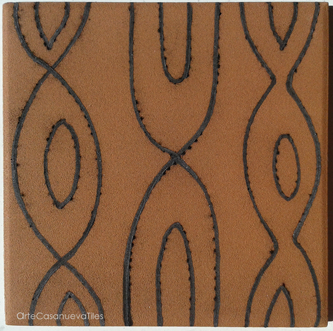
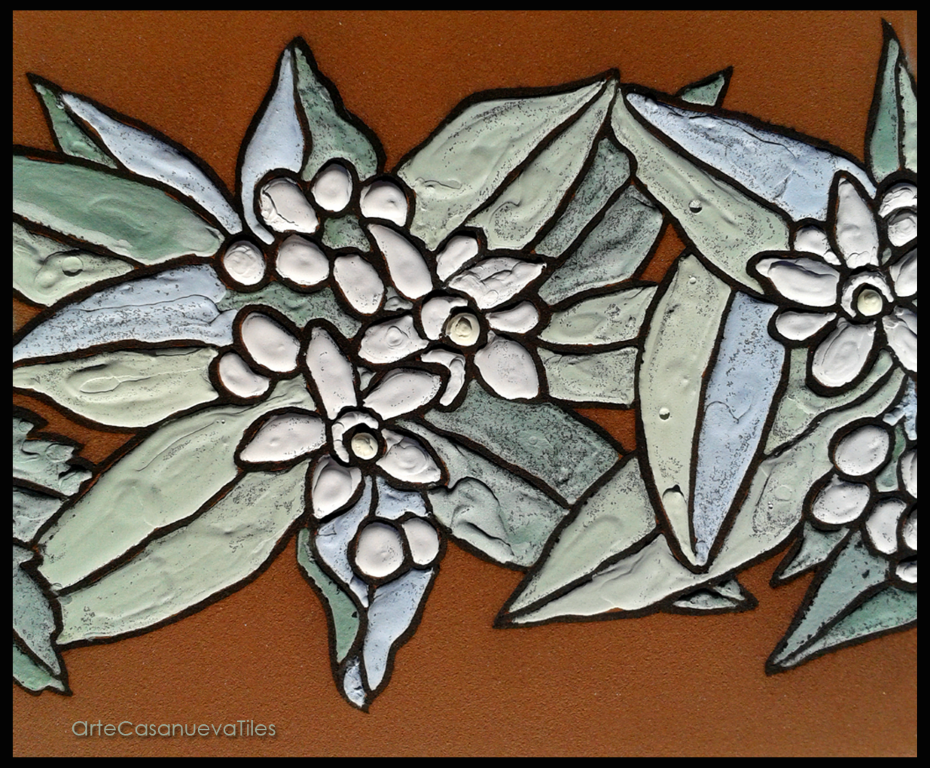
The glazes are manually applied piece by piece. The final result is a shiny, smooth glazing with relief.


ARISTA OR CUENCA TECHNIQUE
This technique of Arista or Cuenca (edge or basin) dates from the 15th century and is a Sevillian innovation that was born to replace the "cuerda seca" technique. With this technique the separation of the colors is achieved by means of a mold carved with the drawing or pattern in negative (of wood, metal or plaster) that is pressed on the surface of a slab clay or tile that is still fresh. When the mold is pressed on the clay, it leaves a relief of fine raised protruding edges (small walls). After the tile is fired, the edges that form the decorative motif facilitate the application of the glazes in the basins left between them, preventing them from running together in the second firing in the kiln. The result is brilliant and delicate.
Therefore, for this technique, the molds must first be made by hand and then made the tiles with the help of the molds and finally glazed by hand one by one, being a laborious process to achieve unique and exclusive pieces.

